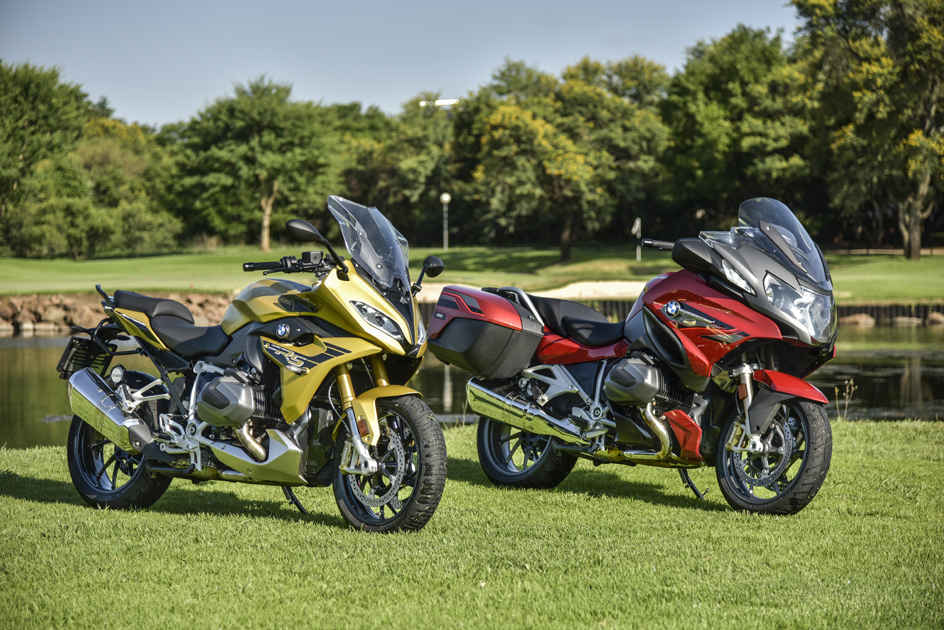
I am going to deal with the RS first in this account. Fact is, BMW’s RS and I go back a long way. Right back to the bike’s beginning. In 1976 I worked at Club Motors in Pretoria. The Ludwig family, owners of the Club Motors Group, were the original importers of BMW and Kawasaki motorcycles into South Africa. I worked at their Honda dealership. When I laid eyes on the first R100 RS to arrive on SA shores I had to have it. Despite being a Honda man through and through, the fully-faired, silver-blue Bee Emm, with spoked wheels with subtle blue pin striping matching that on the mudguard, tank, fairing and “one-and-a-half” seat blew me away.

No other bike available in 1976 was fully faired. The bike, despite its 980cc motor, was slower than a 750F Honda, but the torque more than made up for the performance deficit. It was the 1976 roll on king. Not even Kawasaki’s Z1 could match the big BM twin when you rolled on the throttle in top gear. Real-world performance was impressive, especially with the fairing which allowed sustained high-speed riding. What was an endurance event for riders of other bikes was a doddle for the RS. I remember riding to Salisbury for a weekend to visit my buddy Mike Taylor. Leaving Salisbury at 5 am, I reeled off the 1100 odd kay’s back to Pretoria, including topping up the 24-litre tank three times and a border crossing at Beit Bridge, in 8.5 hours. I pulled into Club Motors at 1.30 pm. Half that ride was in the pouring rain. I found that if I cruised at 180 plus, the wind blast over the top of the screen would keep my visor clear enough to see. The RS handled well enough to make sustained high speed comfortable.
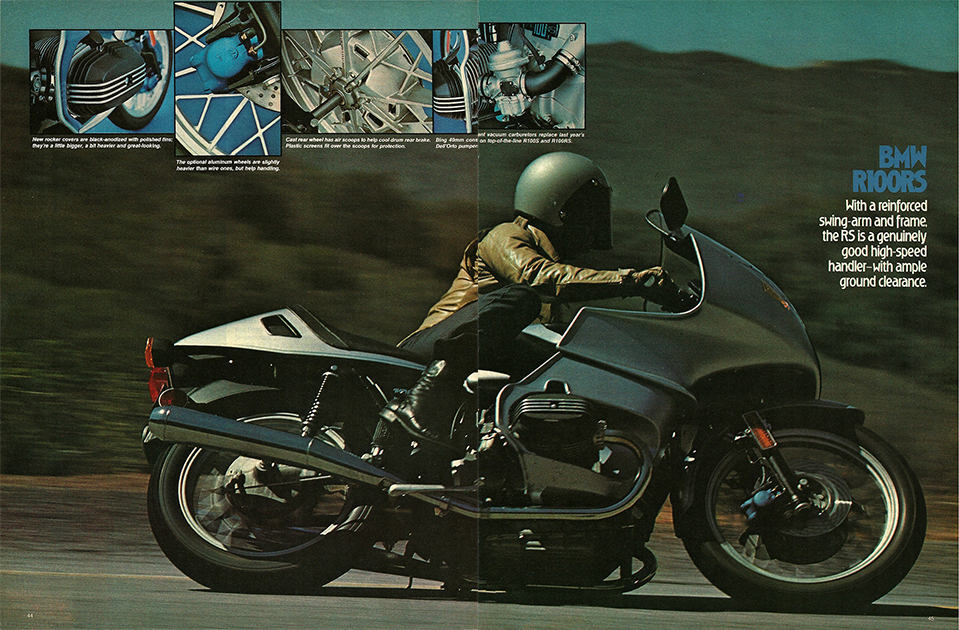
In 1976, the R100 RS was the flagship of the BMW motorcycle range. Things are a little different today. Riders are so spoiled for choice, with every manufacturer trying to build bikes across a broad spectrum to cater to all tastes. The 1976 Boxer motor actuated its valves with aluminium pushrods. 43 years of technological advancement has transformed the RS to levels that were not even a twinkle in the eye of the designers of the ’76 model.

The new R 1250 RS has it’s cam in the head and is endowed with the latest ShiftCam technology. The electronic revolution has transformed modern bikes. Innovations like ABS, engine modes, traction control and keyless operation have transformed the way modern bikes work. I must say, that having lived through both eras, I personally feel that we have lost some of the simplicity which was part of the “man-and-machine” appeal of motorcycles. We have tried to idiot-proof bikes. We now want to compensate for a lack of skill with advanced technology.
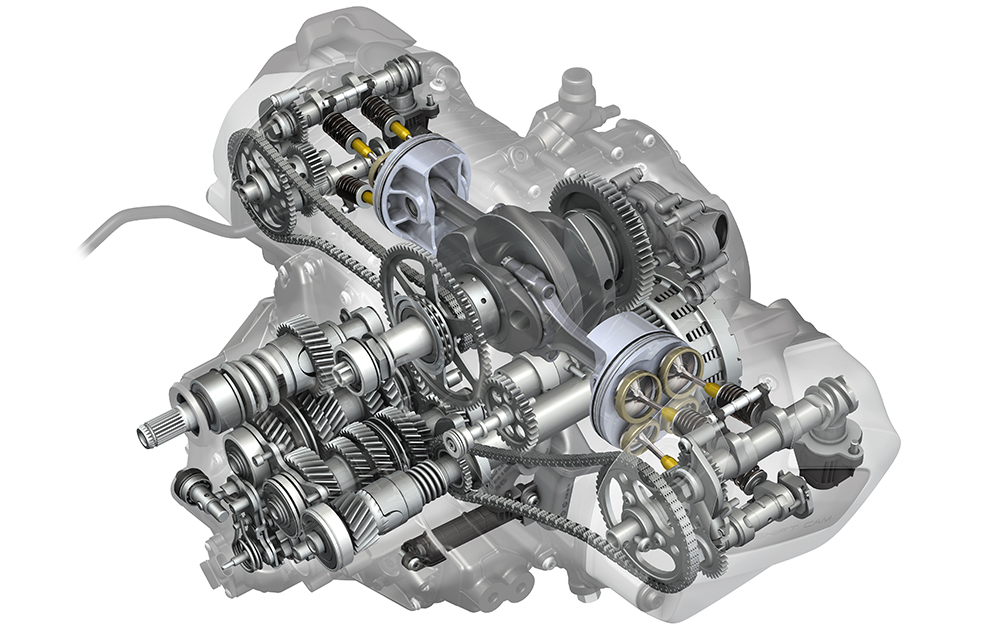
Simon and I rode the new R1250 RT and RS to Mpumalanga to see how well they work in their respective roles. This was a big Deja’ Vue moment for me. Back in the ’70s, we rode in “ET” at every opportunity. Here I was retracing my steps once again on an RS BMW.

It is not only the bikes that have changed in 43 years. In ’76 the highway went as far as Middleburg, whereas today it takes us all the way to Mbombela. [That be the Nelspruit of days of yore] We also now contend with hazards like Toll Gates, traffic and dodgy road surfaces. As if those issues are not enough, we have “Crime Hotspots” too. In the ’70s, criminals were in jail or, if their crimes were severe enough, terminated. Humans had rights, not criminals. Back in the day, we rode flat out all of the time, because we could. Goods moved by train, so you seldom saw trucks on the road and occasional cars were the odd moving chicane, but never an impediment. Consider that the roads were 43 years younger and as smooth as anything.
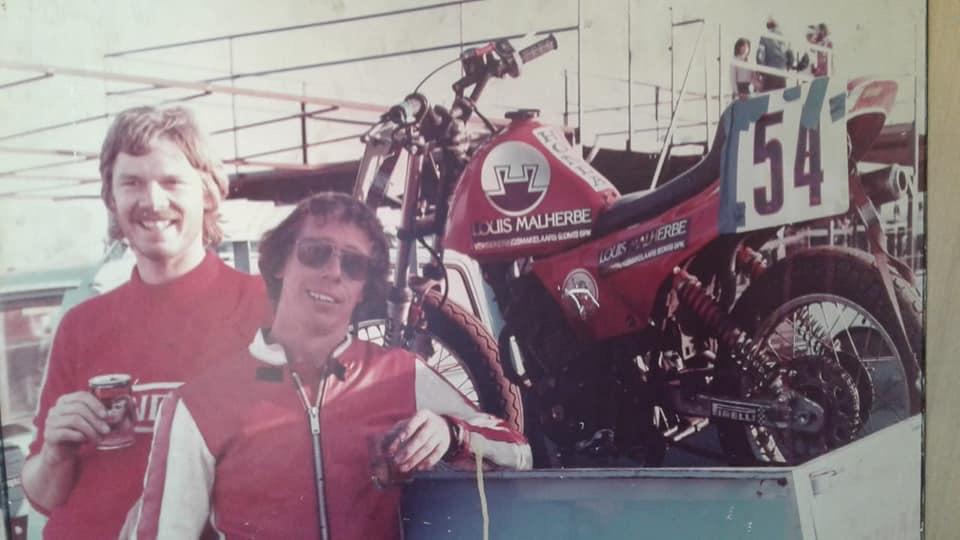
The legendary “22” was immaculate all the way to Hazyview, not just for the current 22 less than perfect kays that we still strafe today. The surfaces were so good that our riding seriously challenged the ground clearance of our bikes. My RS’ tappet covers took strain as did the Stator covers on our 750 Hondas. I remember buying Pratley’s Putty to stop oil seeping from holes ground into these bits by zealous, or realistically, stupid riding. Only in the eighties did we take that enthusiasm to the track, where it belongs. Thinking back, it was around the second half of the 70’s that bikes started to handle half decently, once suitably modified, that is. No mods needed on the modern versions of the RS and RT.
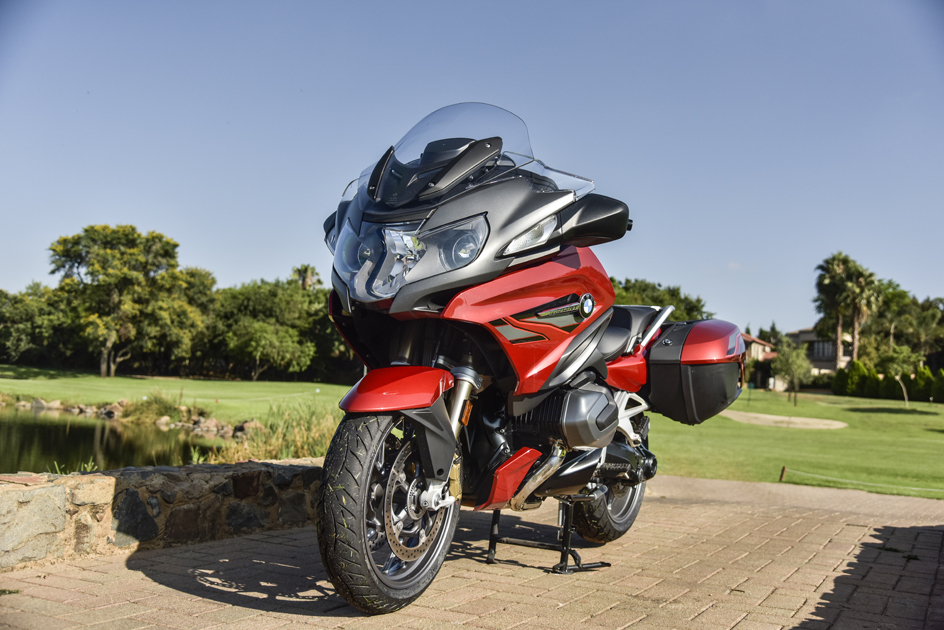
We rode straight down the N4, then took the stunning Schoemanskloof road till it re-joined the N4 at Montrose. This road undulates and sweeps through the mountains and into the valley on smooth tar which highlighted the impeccable high-speed handling and stability of both bikes. The RS, with it’s more aggressive riding position, puts you in a wonderful position to attack bends. My legs fitted neatly into the recesses in the tank, with feet on the rear-sets and a comfy reach to the narrow bars.
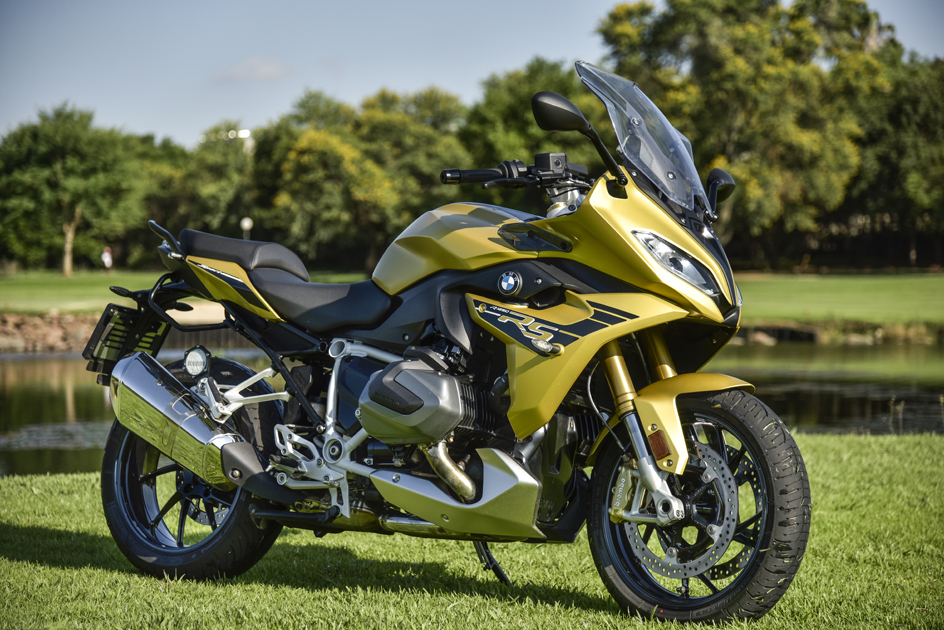
The screen is two way manually adjustable and takes all the blast off your chest. A perfect sports touring perch. The seat is plush enough for 300 kays on a tank stint in the saddle. The suspension is electronically adjusted and I found that set on the sportiest dynamic setting, it was excellent for pretty much all the road surfaces that we encountered. Firm yet compliant, even over the bumpy road down into Pilgrim’s Rest.

The RS sports conventional front forks, as opposed to the Telelever setup on the RT. The RS turns intuitively and holds a line perfectly. The RT, with it’s touring bias, also handles well. The suspension leans a little more to comfort, yet you can ride it really fast down a mountain road. The back suspension felt slightly underdamped when really pressing on, not settling immediately when hitting bumps at warp speed. The RS, on the other hand, just begs you to “bring-it-on”. This is not a criticism of the RT, as it performs way beyond what a tourer of its ilk should be expected to. The RS, in the right hands, will give a Sportbike the willies over a bumpy mountain road.
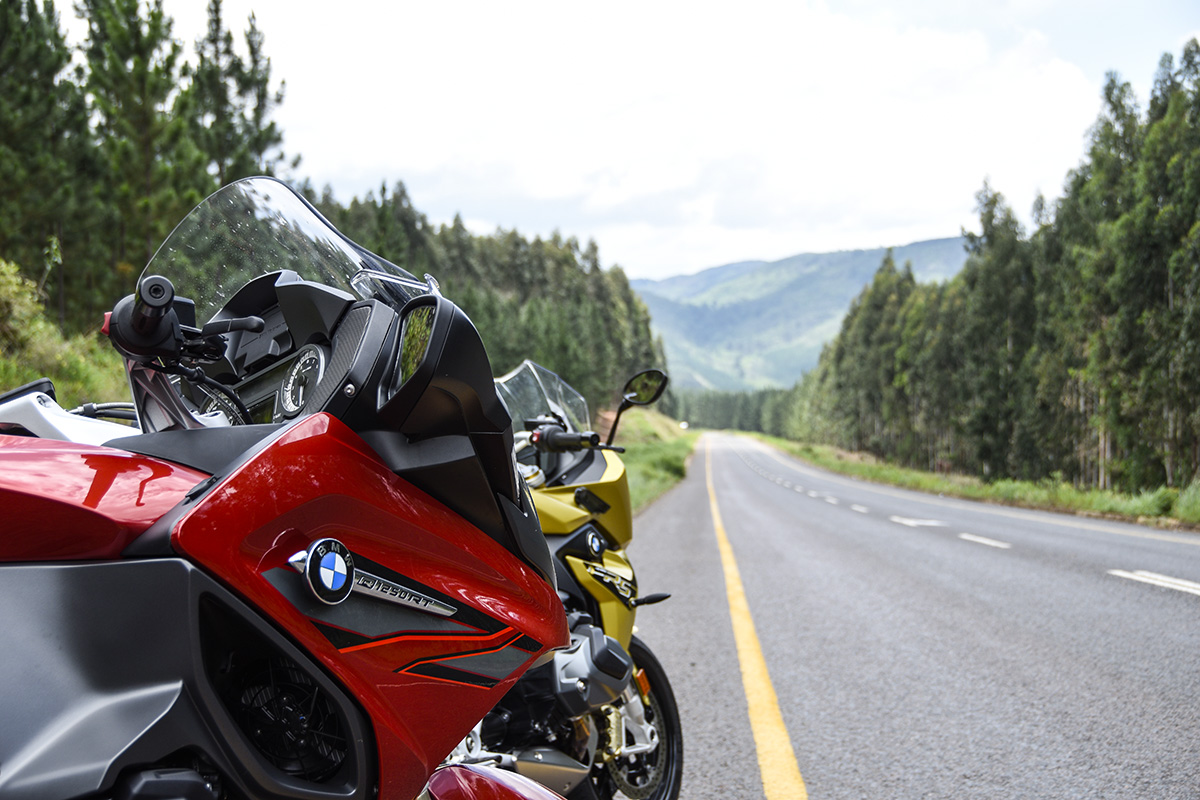
The ShiftCam mill is a revelation. It is honestly one of the great motors of this age. Refined, smooth and sweet at all points of the rev range, it has huge torque and a respectable top-end hit when you lean on it. It is as comfortable when you short shift and lug the motor on a wet road [who needs “rain” mode?] as when you rev the nuts off it. It suits the nature of the RS perfectly.
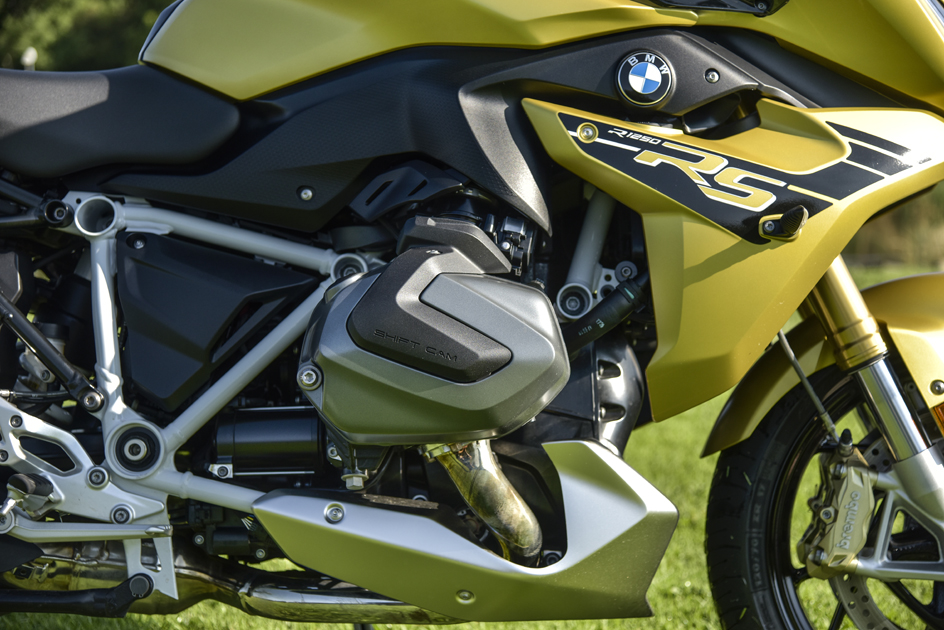
This bike is sublime to ride on real-world roads. You find yourself entering a zone where you feel completely one with the bike and it allows you to focus all your attention on the road. On reflection, I realize that this has always been the strength of BMW’s Boxer engined motorcycles. They combine their talents to provide a superb all-round package which is way greater than the sum of all their parts. We traversed wet, winding and sometimes bumpy roads and the bikes handled it all with total composure and control. We kept them both in “Dynamic” engine mode and found the fuelling absolutely perfect.
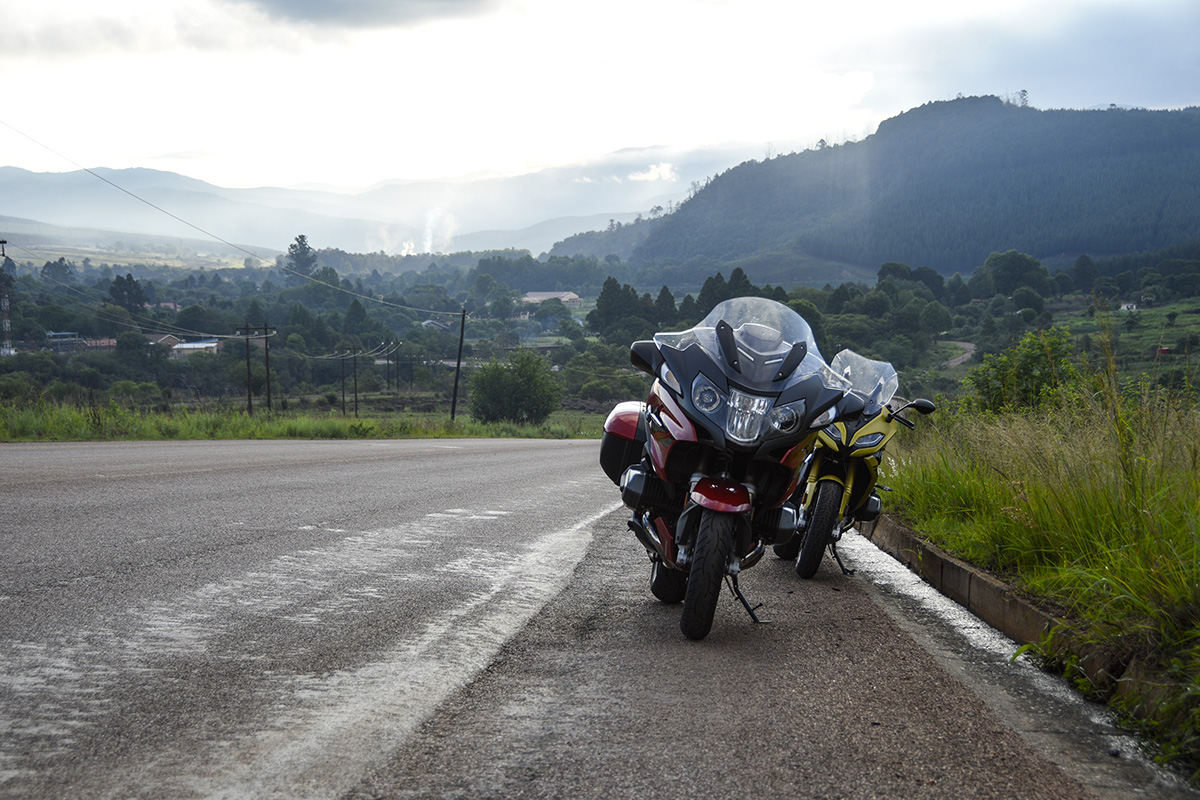
We left Sabie at 6.30 am. It had rained in the night, but the morning was deliciously fresh and bracing. As you all know, motorcycle motors love that cool dense air.
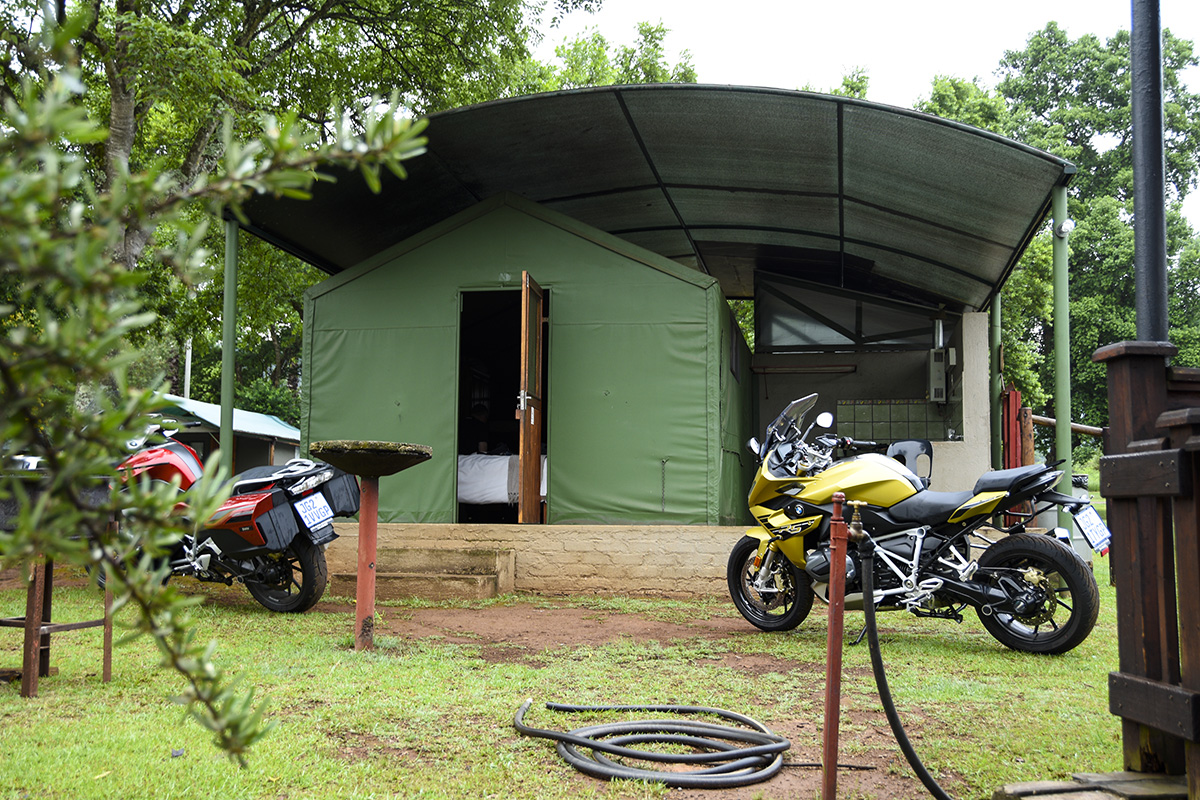
The bikes felt alive and oh so sweet as we rode onto Long Tom pass. Brief patches of mist kissed our visors but never seriously slowed our progress as we guided the two 1250’s through the bends.
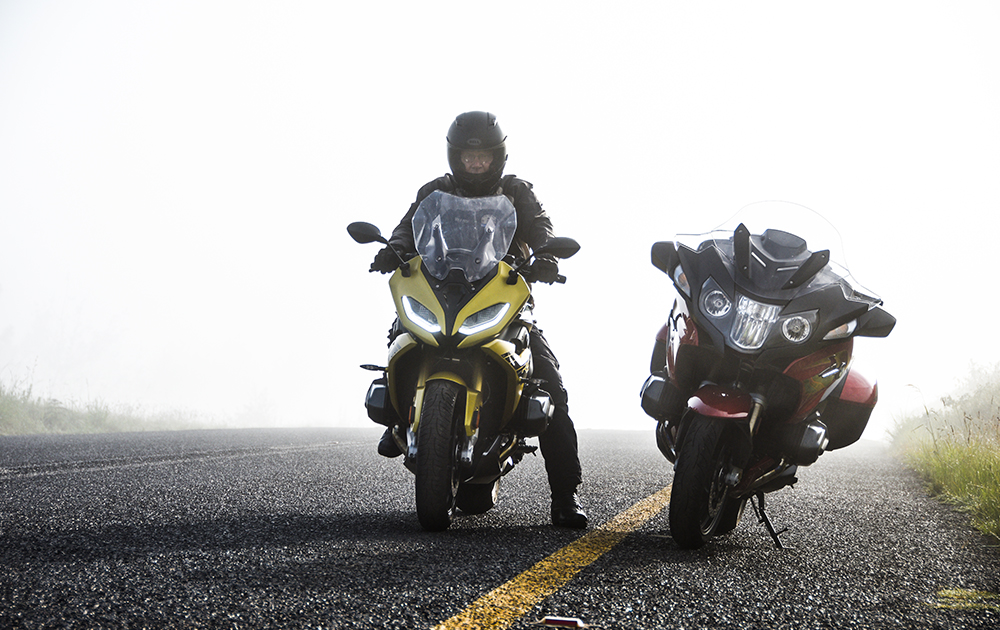
We focussed on riding immaculate lines, not using the brakes, but rather just rolling on and off the throttle and occasionally dropping a gear to control our speed. I love riding like that. Using your skill to hustle the bike along as smoothly as possible. In no time at all Mashishing came and went and we rolled into Dullstroom, bathed in bright sunshine, for breakfast.

Talking of change, in the 70’s Dullstroom was a tiny hamlet, with a solitary “General Dealer”, almost like a Spaza shop, called Tonteldoos. Today, of course, it is a booming little tourist trap. Back on the road, we topped up our tanks at Alzu Petroport. The RS had covered 325 kays with a range of 15 kays left from its 18L tank. Both bikes returned just shy of 20kpl. The RT with its big 25L tank had at least 120 kays of range left. The RT is geared a bit longer than the RS for relaxed cruising ability.
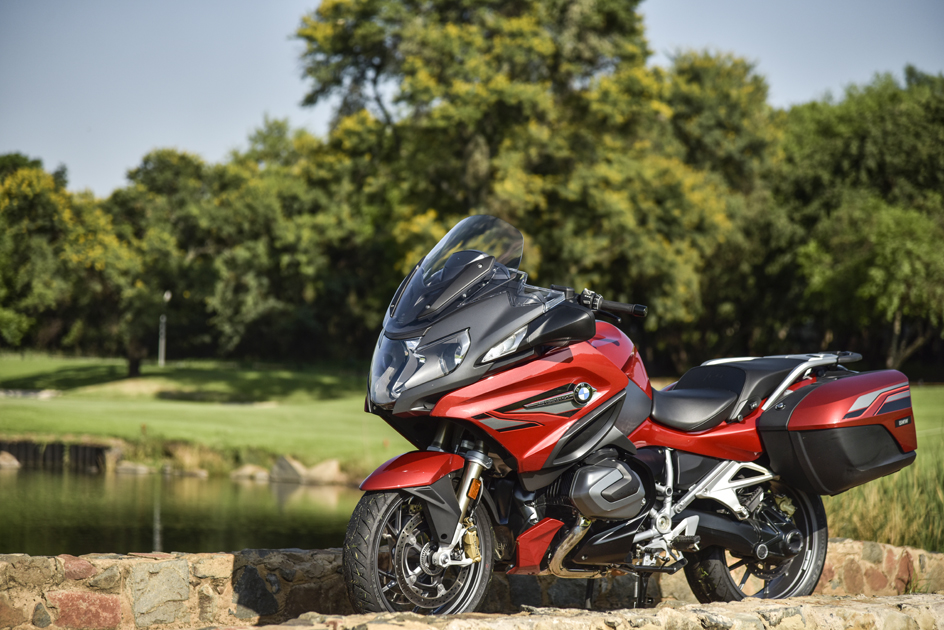
Sitting at 6000 rpm the RS is humming along at 175kph and feels super sweet. The rider sits in a bubble of still air and your progress will only be limited by your need to refuel. In true RS style, this bike is a mile muncher of note. The RT even more so. You adjust the screen electronically to suit, then jump on the main jet to whatever speed you want to cruise at and the RT obliges.
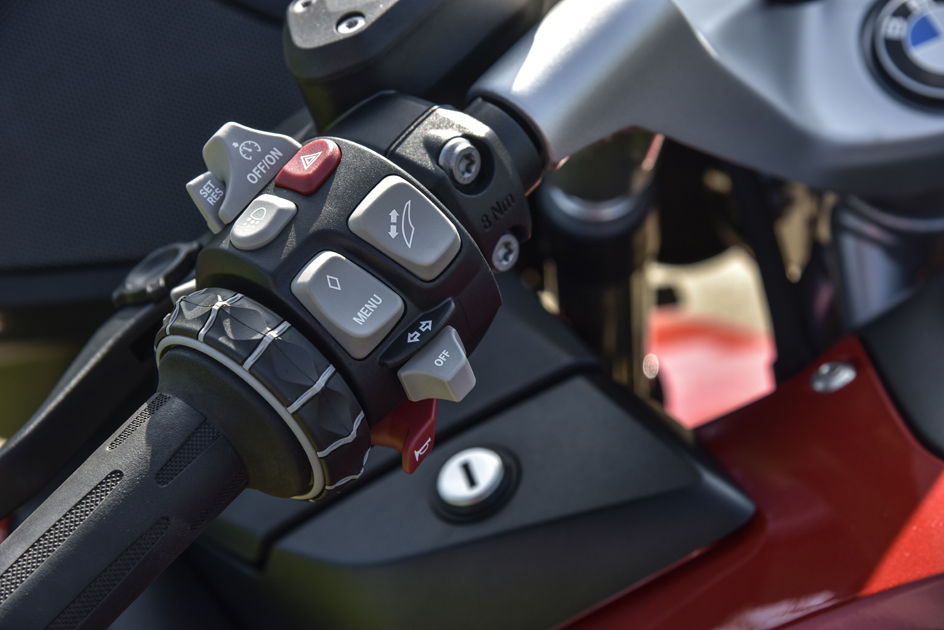
We pulled into the slipstream of a BMW X6, using him to run speed trap interference for us. The driver decided to drop the hammer and I tucked in behind him. At around 225 he started pulling away from me. To my surprise, Simon was riding line astern, perhaps 300 metres behind me. The RT is an amazing motorcycle, capable of a more than decent turn of speed without ever compromising on comfort.
I reckon the RS will shade it on top end, but not by much. The X6 was sucking all the detritus off the road like a giant Hoover and throwing it at me, so I rolled off the gas and re-engaged the speed control at 130. The willing nature of the ShiftCam motors in these bikes is really addictive. They feel eager to be let off the leash for a serious run.
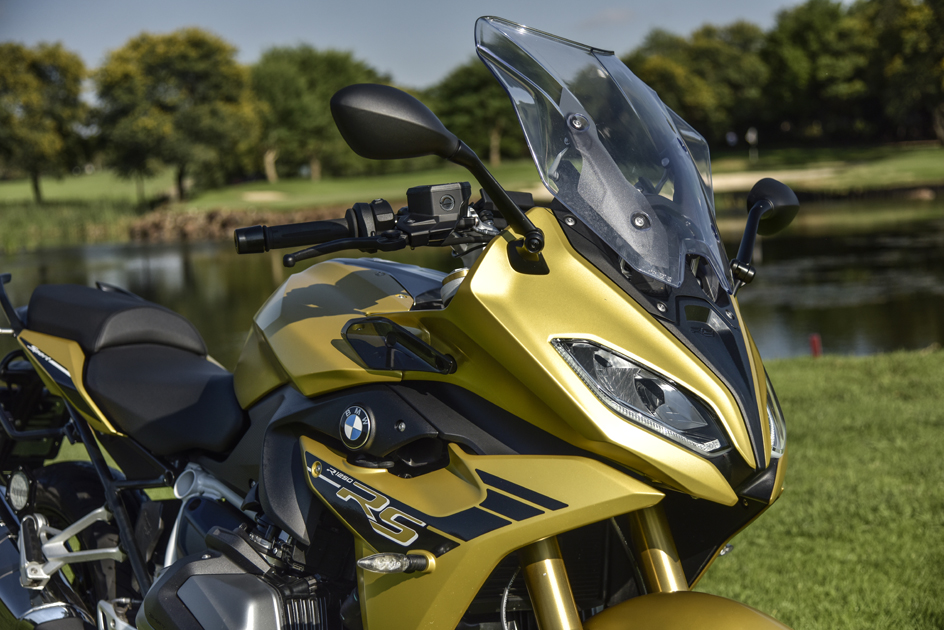
The jury is still out with me as regards to the electronics on the RS. A TFT screen is easy to read in any light and gives you all the info you need. What irritated the crap out of me was not being able to reset the trip meter after filling up. It seems to be a convoluted process which neither Simon or I could easily figure out.
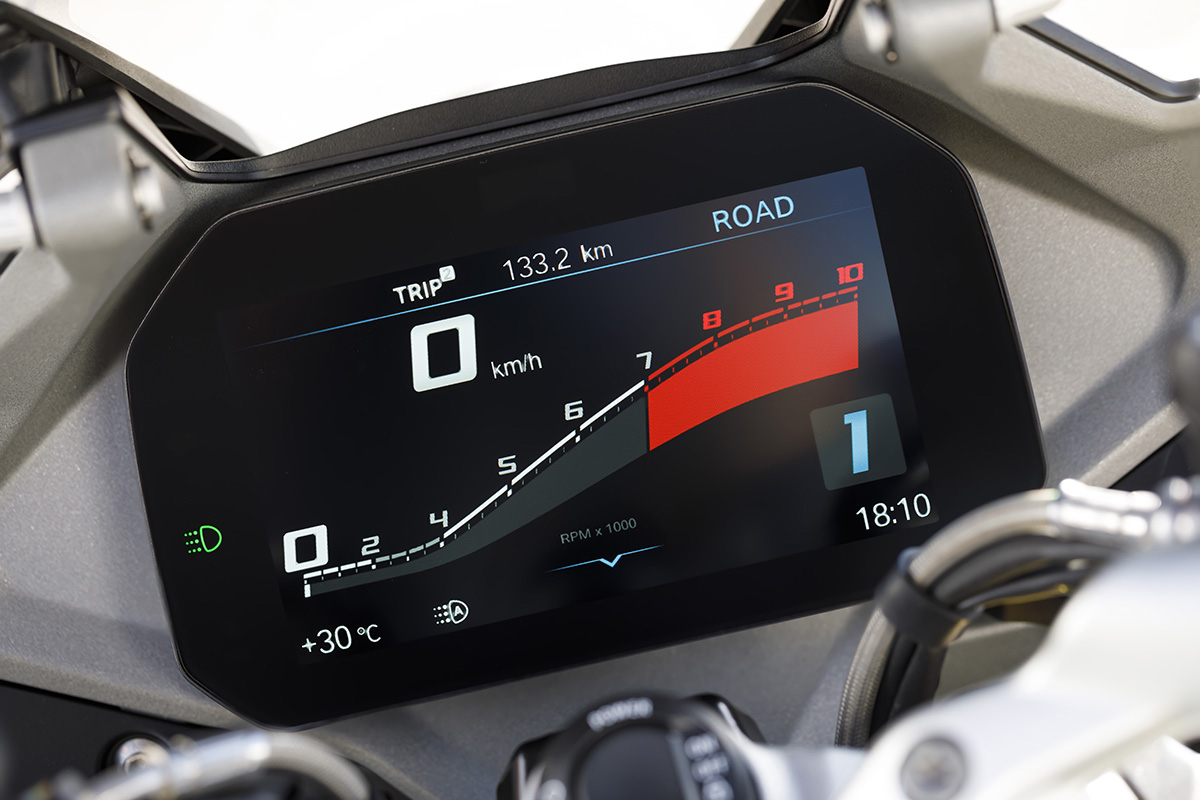
The RT on the other hand, with its classic analogue gauges, is way more user-friendly. Fact is, none of the latest TFT equipped bikes are intuitive enough to be able to access information without studying the manual. The RT, with its classic and easy to read and operate layout, does it for me, period.
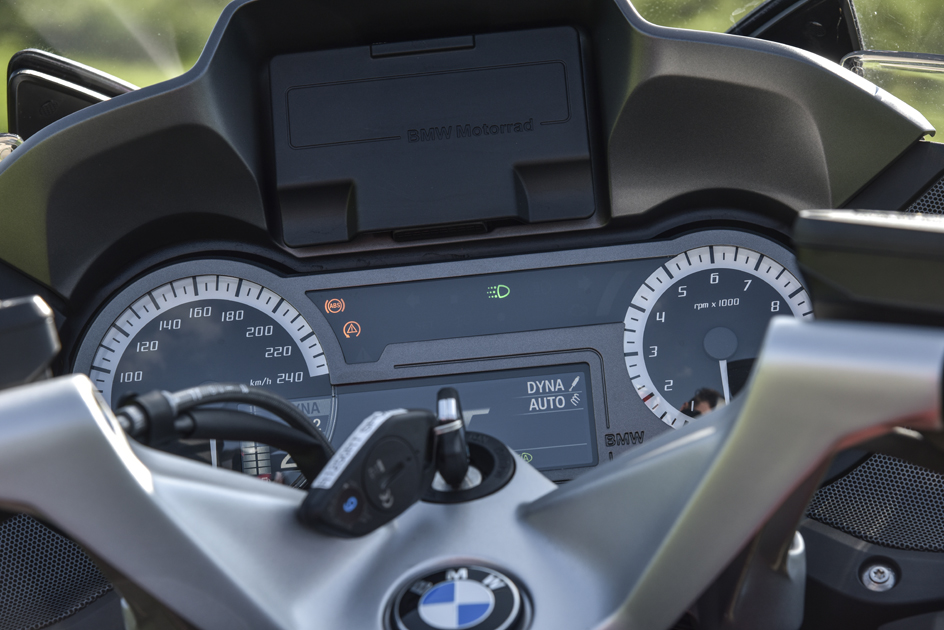
Ford Motor Company suggest that 35% of the cost of their new cars is devoted to the electronics. I don’t think bikes are much different. In fact, with there lean-sensitive dynamics they are probably even more costly to develop and produce. Could it be that sanity will one day prevail and the stupid one-upmanship between companies will get put on hold? Build us simple bikes with intuitive instrumentation. Perhaps Yamaha’s new T700 Tenere’ will lead that charge.
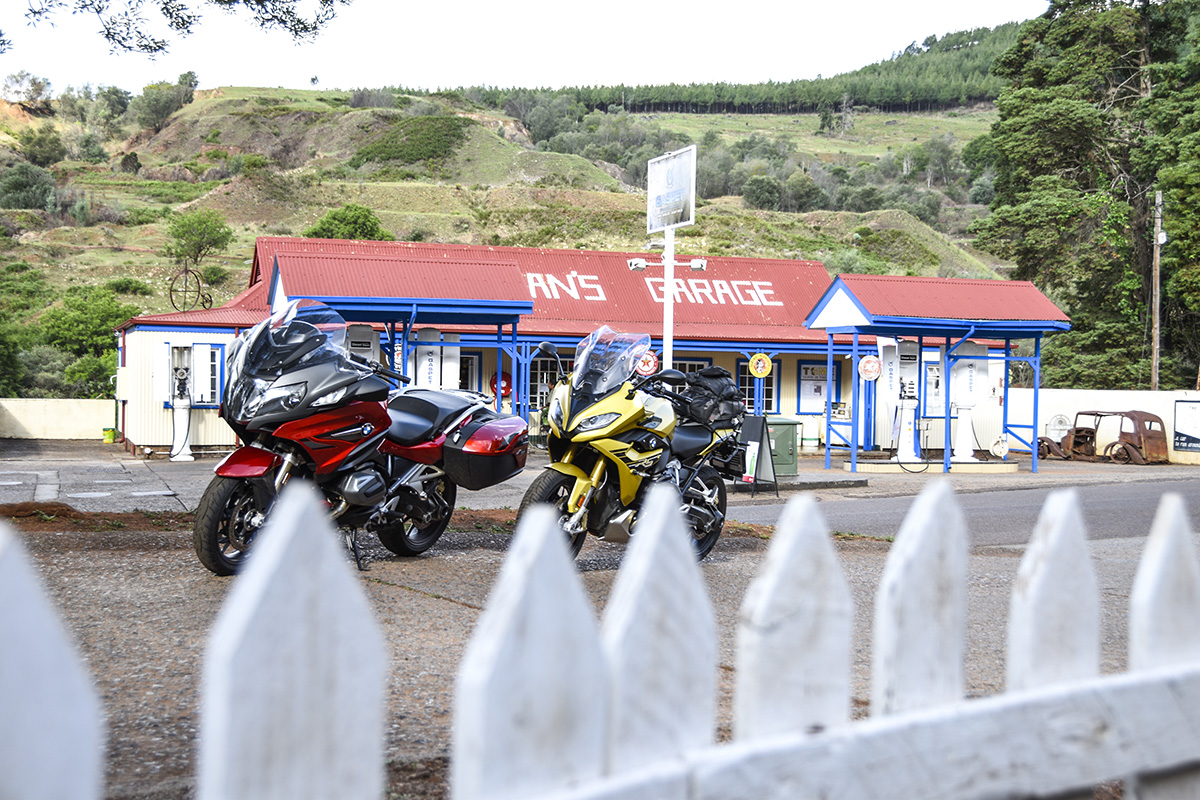
In summary, BMW’s RS and RT have evolved over time into excellent motorcycles that are both at the top of their games. Both Simon and I loved our time in the saddles of these two beauties.




